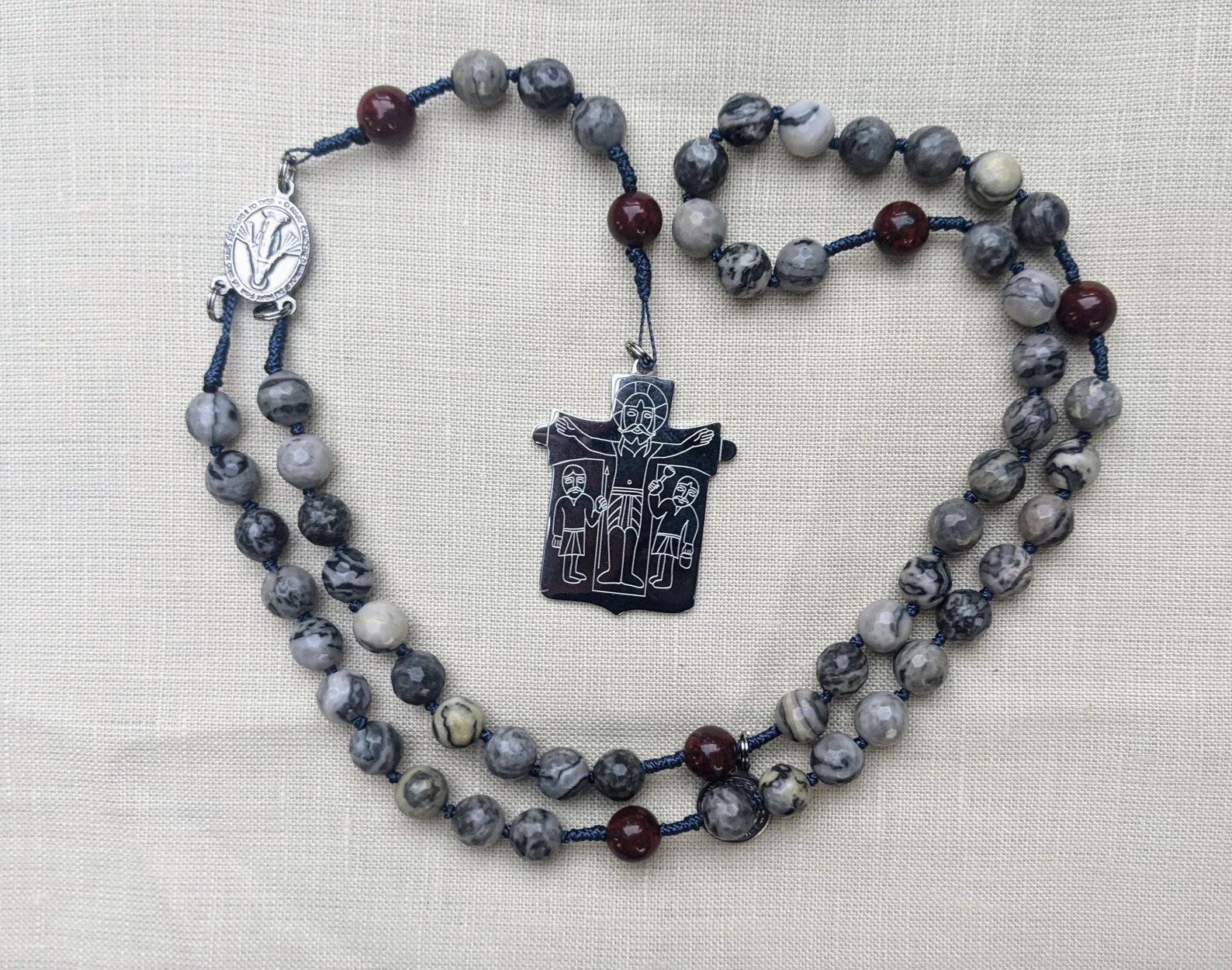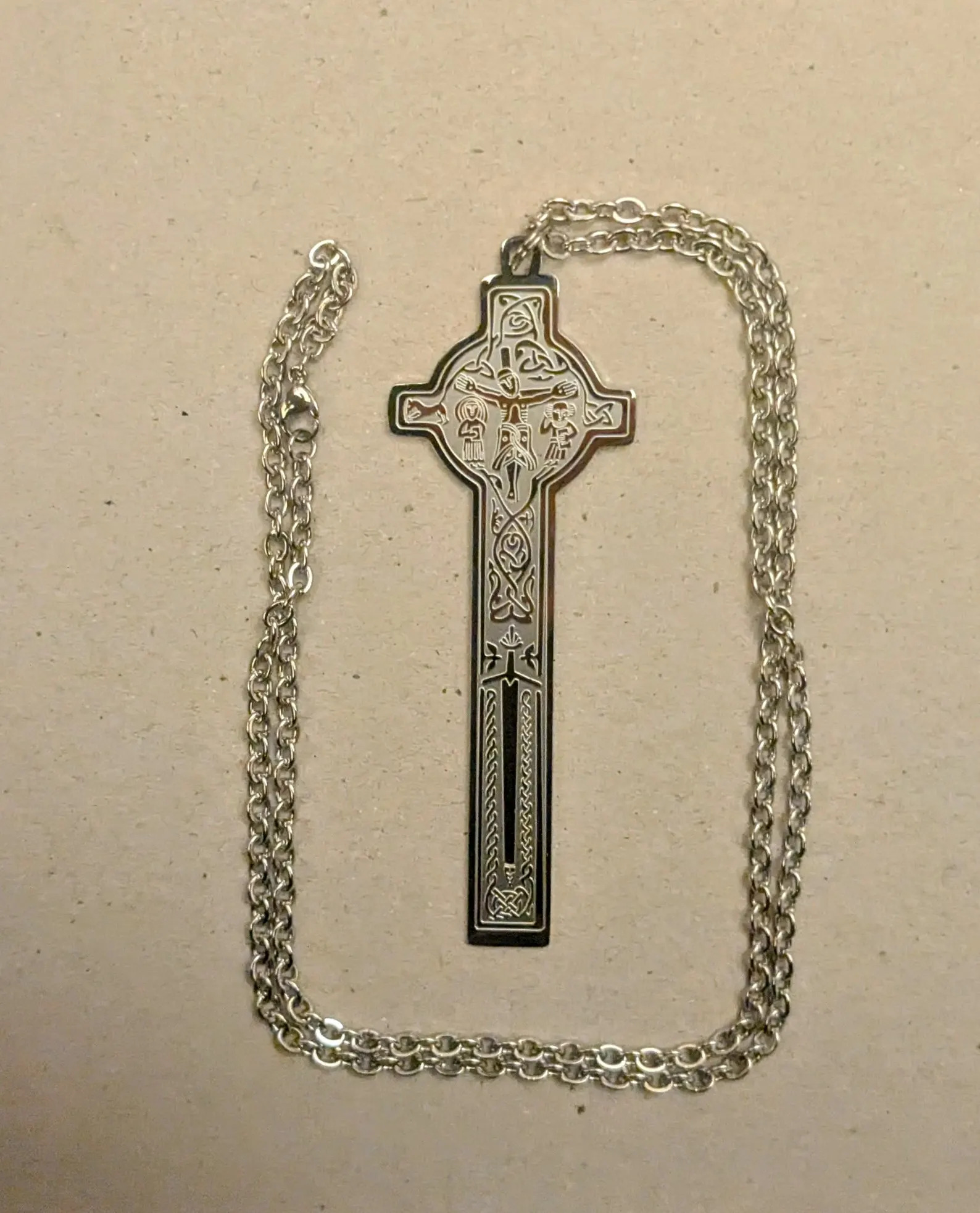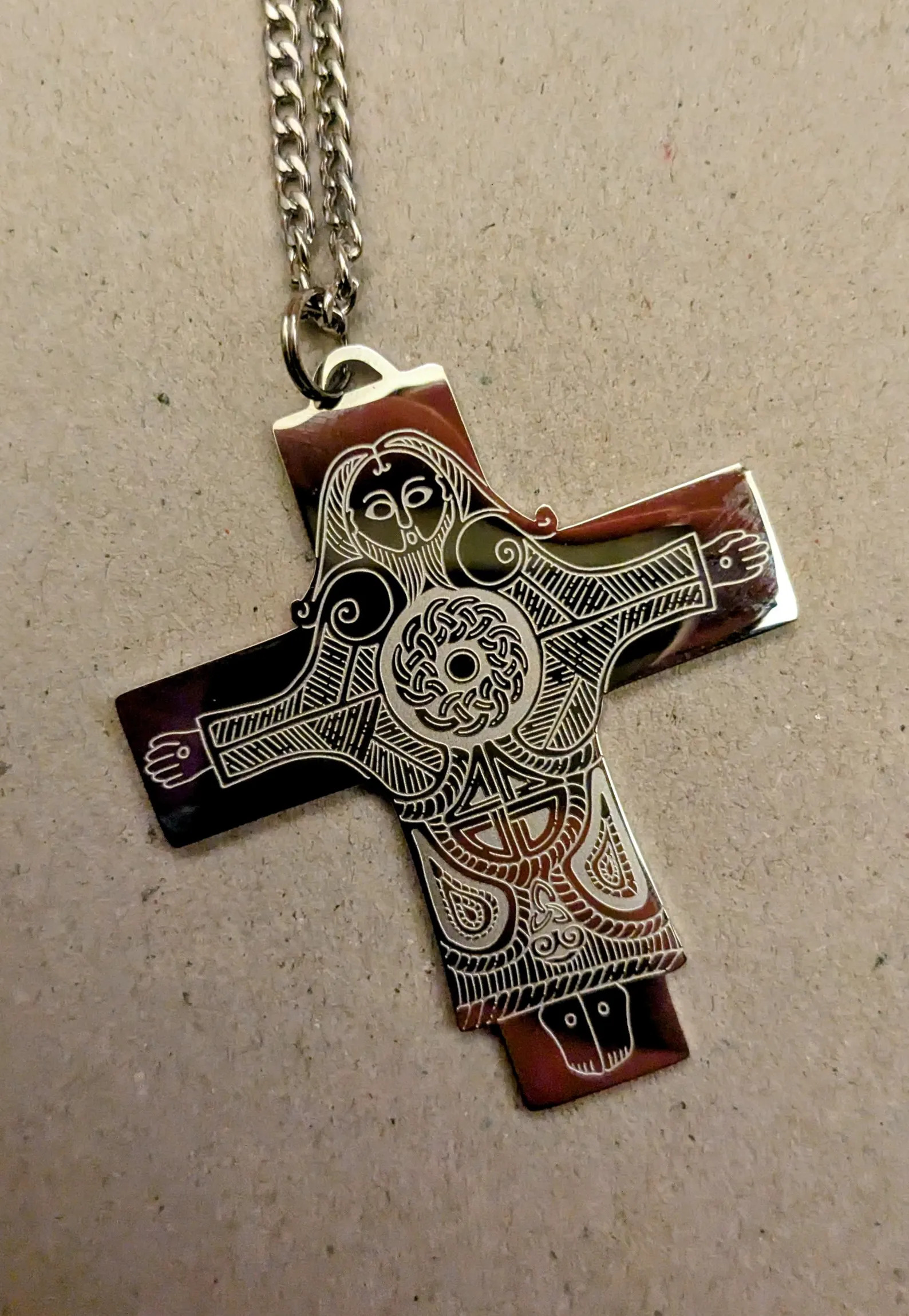SaxonRosary
I picked up a pair of Saxon pectoral crosses and a rosary. The seller notes
All of my rosaries are inspired by traditional designs and folk art from across the length and breadth of the Christian world; they are hand-crafted here in England.
The Saxon Catholic Rosary

This rosary is really unusual, inspired by Early English Christian art. It's made of real gemstones (red jasper), and each bead is individual hand-knotted in the same way high-quality pearls were traditionally strung. This takes a long time, but it protects each and every stone by cushioning it with cord, at the same time as spacing the stones evenly. It is tightly tied and will naturally loosen with use.
About the cross
The design of this cross is inspired by late Saxon carvings (probably finished in the immediate decades before the Norman Conquest of England). Anglo-Saxon portrayals of Christ seldom show Christ in agony as later Medieval art would, and here he is shown in, flanked by Longinus (with the spear) and the Roman solider who have him vinegar on the cross (traditionally referred to as Stephaton). The reverse of this cross shows Christ seated in majesty, and owes much to the Byzantine influence of the early English church in terms of iconography.
About the stones
As with all natural stones, there is slight variation to each bead. These faceted grey beads have strata of black and white, creating a marbling effect.
Large Scottish High Cross

About the cross
This large cross is a careful replica of the MacMillan Cross, which was carved in the late 15th century and now stands in Kilmory Knap Chapel on the western coast of Scotland (in Argyll and Bute).
The front shows Christ crucified and flanked by the Virgin Mary and John the Baptist. Below them, on the shaft of the cross is a claymore sword (in Scots Gaelic, ‘claidheamh-mòr' i.e. great sword). The reverse features Celtic knotwork above a hunting scene, where a kilted and bearded hunter chases after a stag with a pack of hounds.
Celtic Pectoral Cross

About the cross:
This cross is based very closely on a Celtic cross, found on the Calf of Man (a small island of the Southern tip of the Isle of Man in the Irish Sea). The original was carved into slate (most likely in the 8th century), and was probably an altar back (reredos) in a small beehive church, like those of Skellig Michael off the coast of Kerry. Stylistically, it is very similar to crucifixion plaque from Ireland of the same time period.
On the reverse is the image of St Longinus with the spear of destiny, which appeared to the side of the crucifix on the original.